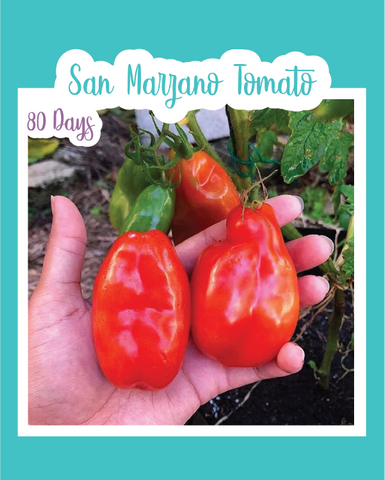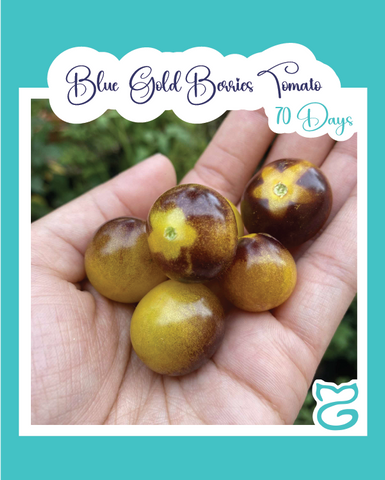
Costoluto Genovese Tomato
**THIS ITEM IS SOLD OUT FOR THE SEASON**
Indeterminate
Seed Count: Approx. 15 seeds
Days to Maturity: 90 Days
Description: This old Italian favorite is phenomenal with superb tomato taste. It's a cute 19th century variety that is flat in appearance with deep ribbing. the Costoluto Genovese tastes more acidic than sweet to me, and it comes packed with deep flavor. This is one of my favorite beefsteak varieties, because it can be enjoyed fresh, cooked, or preserved for later, which makes it popular with chefs. The skin isn't super thick, and the flesh is firm and not too mushy with not too many seeds. Plus it thrived in Southern Florida. I love the Costoluto Genovese the most in my fresh pico de gallo with my San Marzanos served on top of delicious tacos.
Mint2Grow Tip: I have these tomatoes in partial shade here in Florida. Usually my tomatoes stop producing around April, but this variety are still producing strong in June, regardless of our excessive heat. However, the tomatoes that have set in the heat are significantly smaller than the ones that formed with more favorable tomato temperatures. This variety stayed disease free even with the heavy rains, which is a super plus for me. I haven't noticed many bugs on this variety, and the hornworms seemed to prefer other tomatoes in my garden, however the squirrels and birds loved these so I'd recommend keeping them protected when they start to ripen.
**THESE SEEDS CAME DIRECTLY FROM MY GARDEN AND MY BE CROSS POLLINATED**
While I do not spray my plants with anything, I can not officially offer these as organic. However, they are organically grown.
How To Grow
Sowing: Start tomatoes indoors 6-8 weeks before the last frost of spring, or direct sow in warmer climates. Sow seeds 1/4" deep and 1" apart. Tomatoes need 70-75 degrees F to germinate, as well as adequate light. Keep the soil moist, but make sure there is proper drainage, or the seeds can rot. When the second set of leaves emerge, transplant the seedlings into individual pots. Bury the stems up to the lowest set of leaves for strongly rooted plants.
Growing: Provide a trellis for this indeterminate tomato, providing extra supports where fruit set. Protect plants, if temperature drops below 55 degrees F, or damage will occur. Keep soil consistently moist, or cracking may also occur. Mulching can be beneficial to preserve moisture, and deter weeds. It is important to avoid wetting the leaves to reduce diseases. You can prune suckers to increase production, (I usually don't bother, due to laziness, but I'll give my plants big trims every month or two once the tomatoes are removed from that section). I surround my tomato plants with basil (it's a great Tomato horn worm deterrent) Other companions include, carrots, garlic, or onions. However, avoid planting them with cabbage, or corn.
Harvesting: Test the ripeness of tomatoes by pressing them gently; the flesh should yield slightly. The mature color also indicates ripeness. If the stem does not come easily off the vine, cut it with a scissors to avoid damaging the vines. Vine ripened tomatoes have the best flavor, but you can harvest them before they fully ripe if pests or weather become an issue. As soon as frost comes, all tomatoes should be harvested, even the green ones. Unripe tomatoes will ripen eventually, if kept in a warm place out of direct sunlight. Seed saving: Since cross pollination between most tomato varieties is unlikely, isolation is not a concern. Pick fully ripe tomatoes and separate the seeds from the pulp, and let completely dry. You can also ferment your seeds to remove the gel like substance on the seeds exterior. During fermentation, any bad seeds will float to the top, and all of the viable seeds stay sunk to the bottom. Fermenting your seeds can also increase germination rates as well. To ferment, squeeze the seeds, along with its gel, into a jar. Add some water, and let it sit at room temperature for a couple of days, you should see a film form on the top, and it should smell a bit sour. Once the film forms, skim it off the top, and rinse out your seeds. Place them on parchment paper to dry. Once dry, store your seeds for the next season.




